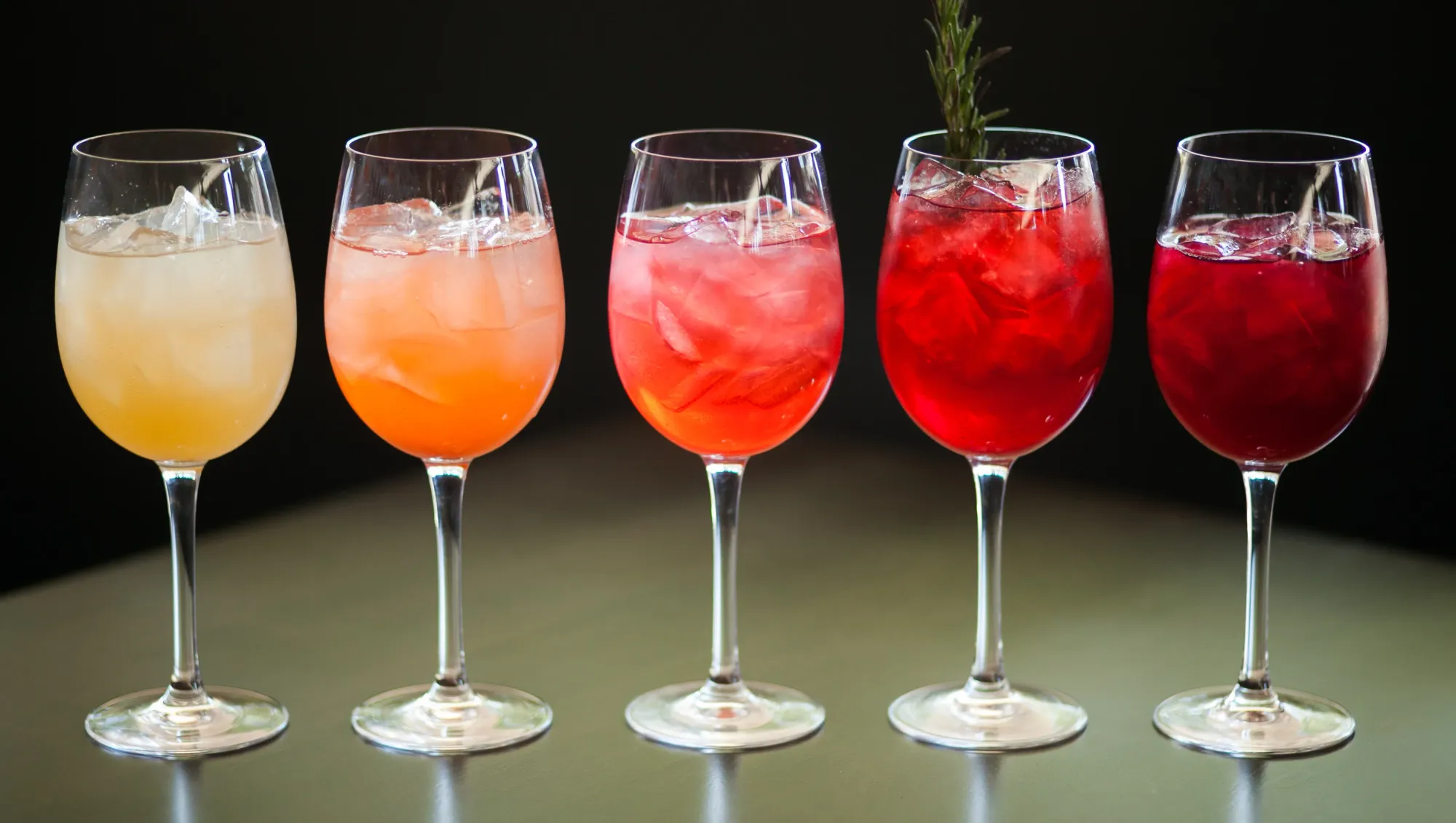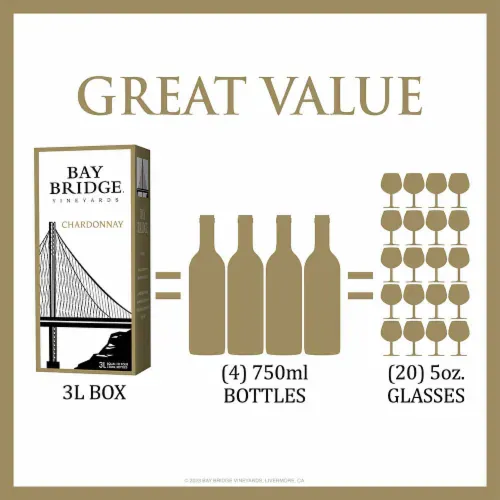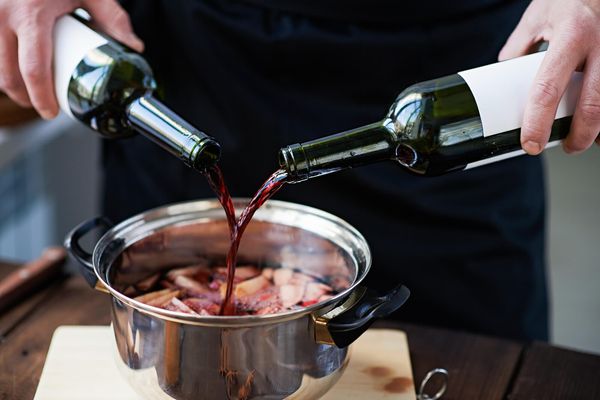Wine coolers are a popular alcoholic beverage that has been around for decades. They are a refreshing and easy-to-drink alternative to traditional wines, beers, and spirits. Wine coolers are made by mixing wine with fruit juice, sparkling water, and sugar. They are available in a variety of flavors and are typically served chilled.
One of the most significant advantages of wine coolers is their low alcohol content. According to various sources, wine coolers have an ABV (alcohol by volume) ranging from 3% to 7%. This range is significantly lower than that of other types of alcoholic beverages such as beer or spirits, which can have ABVs up to 20%. As a result, wine coolers are a great option for those who want to enjoy a refreshing alcoholic beverage without getting too intoxicated. However, it is essential to note that the actual alcohol content of a wine cooler may vary depending on the brand and type of wine used.
Understanding Wine Coolers
Wine coolers are a type of alcoholic beverage that is refreshing and easy to drink. They are typically made from a combination of wine, fruit juice, and carbonated water. The alcohol content of wine coolers varies depending on the brand and type, but they generally have lower alcohol content than other alcoholic beverages like beer or spirits.
Wine coolers are often served chilled and can be a great option for those who prefer a lighter, sweeter taste. They are also a popular choice for those who are looking for a refreshing drink during the summer months. Many people enjoy making their own wine coolers at home using their favorite wine and fruit juices.
When it comes to choosing a wine cooler, there are many different types and flavors to choose from. Some of the most popular flavors include lemonade, berries, mango, and citrus. Wine coolers can be purchased at most liquor stores and are also available at many restaurants and bars.
For those who are interested in making their own wine coolers, there are many recipes available online. Homemade wine coolers can be made using a variety of different wines and fruit juices, allowing for a wide range of flavors and variations. When making a homemade wine cooler, it is important to choose a wine that complements the fruit juice and other ingredients.
Overall, wine coolers are a refreshing and easy-to-drink beverage that can be enjoyed in a variety of different settings. Whether you prefer to purchase them at the store or make your own at home, they are a great option for those who are looking for a lighter, sweeter alternative to other types of alcoholic beverages.
Alcohol Content in Wine Coolers
Wine coolers are a popular alcoholic beverage that is enjoyed by many. They are a refreshing alternative to beer or spirits and are often consumed during social gatherings or events. One of the defining characteristics of wine coolers is their relatively low alcohol content.
The alcohol content in wine coolers can range from 3% to 7% ABV (alcohol by volume). This is significantly lower than other types of alcoholic beverages such as beer or spirits, which can have ABVs up to 20%. The lower alcohol content makes wine coolers a popular choice for those who want to enjoy an alcoholic beverage without getting too intoxicated.
It is worth noting that not all wine coolers have the same alcohol content. The alcohol content can vary depending on the specific brand and type of wine cooler. Some wine coolers may have a higher alcohol content than others, so it is important to check the label before consuming.
Overall, wine coolers are a great option for those who want to enjoy an alcoholic beverage without getting too intoxicated. With a range of flavors and alcohol content, there is a wine cooler out there for everyone.
Types of Wine Used in Wine Coolers
Wine coolers are a popular alcoholic beverage choice, especially during the summer months. They are typically made by blending wine, fruit juice, and carbonated water. The alcohol content of wine coolers varies depending on the type of wine used in the mix.
Red Wine
Red wine is a popular choice for wine coolers. It is made from red grapes, and its color comes from the skins of the grapes. Red wine is typically full-bodied and has a higher alcohol content than white wine. Spanish Rioja is a popular red wine used in wine coolers.
White Wine
White wine is another popular choice for wine coolers. It is made from white or green grapes, and its color ranges from clear to yellow. White wine is typically lighter and has a lower alcohol content than red wine. Pinot Gris is a popular white wine used in wine coolers.
Moscato Wine
Moscato wine is a sweet white wine that is often used in wine coolers. It is made from Muscat grapes and has a fruity flavor. Moscato wine has a low alcohol content, typically around 5-7%.
Sweet Wine
Sweet wines are often used in wine coolers because of their fruity flavor. They are made from grapes that have a higher sugar content than other types of wine. Sweet wines have a lower alcohol content than other types of wine, typically around 10-12%.
Rose Wine
Rose wine is a popular choice for wine coolers because of its light and fruity flavor. It is made from red grapes, but the skins are removed early in the fermentation process, which gives it a pink color. Rose wine has a lower alcohol content than red wine, typically around 11-13%.
Plum Wine
Plum wine is a sweet wine made from plums. It has a fruity flavor and is often used in wine coolers. Plum wine has a low alcohol content, typically around 10-12%.
In conclusion, wine coolers can be made from a variety of wines, each with their own unique flavor and alcohol content. When making a wine cooler, it is important to choose a wine that complements the other ingredients and provides the desired alcohol content.
The Role of Sugar and Flavors
Wine coolers are a popular beverage choice for those who prefer a sweeter, fruitier taste in their drinks. The sweetness in wine coolers comes from the addition of sugar and fruit juices. These sweet flavors make wine coolers more appealing to those who don't particularly enjoy the taste of wine.
Sugar plays a crucial role in the fermentation process of wine coolers. Yeast consumes the sugar in the fruit juice and converts it into alcohol. The amount of sugar in the wine cooler determines the alcohol content. A wine cooler with a higher sugar content will have a lower alcohol content, while a wine cooler with a lower sugar content will have a higher alcohol content.
Fruit juices are also added to wine coolers to enhance the flavor and aroma. The type of fruit juice used in a wine cooler can significantly impact its taste. For example, a wine cooler made with apple juice will have a different taste than a wine cooler made with grape juice.
It's essential to note that the sugar content in wine coolers can vary significantly. Some wine coolers may contain as little as 2 grams of sugar per liter, while others may contain up to 100 grams of sugar per liter. It's important to check the label of a wine cooler to determine its sugar content and alcohol content.
Flavored wine coolers are also widely available. These wine coolers contain added flavors, such as peach, raspberry, or strawberry, to enhance the taste. Flavored wine coolers are often sweeter than traditional wine coolers and may contain more sugar.
In summary, sugar and fruit juice play a significant role in the taste and alcohol content of wine coolers. The type and amount of sugar and fruit juice used in a wine cooler can significantly impact its flavor and aroma. It's important to check the label of a wine cooler to determine its sugar content and alcohol content.
Comparing Wine Coolers with Other Alcoholic Beverages
When it comes to alcoholic beverages, wine coolers are often seen as a lighter, sweeter option that is perfect for those who want to enjoy a refreshing drink without getting too intoxicated. However, how do wine coolers compare to other types of alcoholic beverages in terms of alcohol content? Let's take a closer look.
Beer and Ale
Compared to beer and ale, wine coolers generally have a lower alcohol content. While the alcohol content of beer and ale can vary widely depending on the brand and type, most beers and ales contain around 5% alcohol by volume (ABV). In contrast, wine coolers typically contain between 4% and 6% ABV, making them a slightly lighter option.
Spirits and Hard Liquor
When compared to spirits and hard liquor, wine coolers are definitely on the lighter side. Spirits and hard liquor can have an ABV ranging anywhere from 20% to 60%. For example, vodka typically has an ABV of around 40%. This means that wine coolers are a much less potent option compared to spirits and hard liquor.
Sangria
Sangria is a popular alcoholic beverage that is made by mixing red wine with fruit, sugar, and other ingredients. The alcohol content of sangria can vary depending on how it is made, but it generally falls between 8% and 11% ABV. This means that sangria is a slightly stronger option compared to wine coolers.
In summary, wine coolers are a lighter, sweeter option compared to many other types of alcoholic beverages. While they do contain alcohol, their ABV is generally lower than that of beer, spirits, and hard liquor. However, it's important to remember that even though wine coolers are lighter, they still contain alcohol and should be consumed responsibly.
Effects of Wine Cooler Alcohol Content
Wine coolers have a lower alcohol content than most alcoholic beverages, making them a popular choice among underage drinkers and those who prefer a milder buzz. However, even though wine coolers have a lower alcohol content than other alcoholic beverages, excessive drinking can lead to impaired judgment, coordination, and motor skills.
The effects of wine cooler alcohol content on the body and mind can vary depending on the individual's tolerance, age, and weight. Drinking too much wine cooler can cause dehydration, which can lead to health problems such as headaches, nausea, and vomiting.
Excessive drinking of wine coolers can also lead to intoxication, which can impair a person's judgment and motor skills, making it dangerous to operate a vehicle or machinery. It is important to note that even though wine coolers have a lower alcohol content than other alcoholic beverages, excessive drinking can still lead to dangerous levels of intoxication.
It is recommended that individuals consume wine coolers in moderation to avoid the risks associated with excessive drinking. Drinking plenty of water and eating food while drinking can also help reduce the effects of alcohol on the body.
Overall, while wine coolers may seem like a safer alternative to other alcoholic beverages, it is important to consume them responsibly and in moderation to avoid the risks associated with excessive drinking.
Responsible Consumption of Wine Coolers
While wine coolers have a lower alcohol content than other alcoholic beverages, it is still important to consume them responsibly. In order to minimize the risks associated with alcohol consumption, it is recommended that individuals follow standard drink guidelines and practice responsible consumption.
A standard drink is defined as any drink that contains approximately 14 grams of pure alcohol. This can vary depending on the type of alcohol and the size of the drink. For wine coolers, a standard drink is typically considered to be 5 ounces, or one glass. It is important to keep this in mind when consuming wine coolers, as it can help individuals monitor their intake and ensure that they are consuming alcohol in a safe and responsible manner.
In order to practice responsible consumption, individuals should also be aware of their personal limits and tolerance for alcohol. This can vary depending on factors such as body weight, age, and overall health. It is important to listen to your body and avoid consuming more alcohol than you can handle.
In addition, individuals should also be mindful of the rate at which they consume wine coolers. Drinking too quickly can lead to a higher blood alcohol concentration, which can increase the risk of alcohol-related harm. It is recommended that individuals consume no more than one standard drink per hour in order to minimize this risk.
Overall, responsible consumption of wine coolers involves being aware of standard drink guidelines, monitoring personal limits and tolerance for alcohol, and avoiding excessive consumption or drinking too quickly. By following these guidelines, individuals can enjoy wine coolers in a safe and responsible manner.
Storing and Serving Wine Coolers
When it comes to storing wine coolers, it is important to keep in mind that they have a lower alcohol content than regular wine. Most wine coolers contain between 4% to 6% of alcohol, which means they can be kept at a higher temperature than regular wine. However, it is still important to store them properly to ensure their quality doesn't deteriorate.
The ideal storage temperature for wine coolers is between 45°F and 55°F. Temperatures higher than this can cause the alcohol to evaporate and change the flavor of the wine cooler. On the other hand, temperatures lower than this can cause the wine cooler to freeze and expand, which can damage the bottle.
If you have a large collection of wine coolers, it may be worth investing in a wine cooler refrigerator. These refrigerators are designed to maintain a consistent temperature and humidity level, which is ideal for storing wine coolers. They also come in different sizes, so you can choose one that fits your collection.
When serving wine coolers, it is important to serve them chilled. You can chill wine coolers in the refrigerator or freezer for a few hours before serving. Alternatively, you can use an ice bucket to chill the bottle quickly.
It is also important to serve wine coolers in the right glass. A wine glass is the best option, but any glass that is similar in shape will work. The glass should be large enough to hold the wine cooler and allow room for swirling.
In summary, wine coolers should be stored at a consistent temperature between 45°F and 55°F to maintain their quality. A wine cooler refrigerator is a good investment for those with a large collection. When serving wine coolers, they should be chilled and served in a wine glass or similar shaped glass.
Brand Influence on Wine Cooler Alcohol Content
The alcohol content of wine coolers can vary depending on the specific brand and type of wine cooler. Most wine coolers contain lower percentages of alcoholic content, falling between 4% to 6% alcohol by volume (ABV), while the average alcohol content in wine is usually between 11% and 14% ABV.
Brand plays a significant role in determining the alcohol content of wine coolers. For example, Smirnoff Ice is a popular brand that produces wine coolers with an alcohol content of 5% ABV. Smirnoff Ice is known for its sweet and fruity flavors and is a popular choice among young adults.
Portland Sangria is another brand that produces wine coolers with a higher alcohol content of 7% ABV. These wine coolers are made with real fruit juice and come in a variety of flavors such as strawberry, peach, and mango.
It is important to note that not all wine coolers are created equal, and the alcohol content can vary depending on the specific brand and type of wine cooler. Consumers should always check the label for the alcohol content before consuming any wine cooler.
In conclusion, brand plays a significant role in determining the alcohol content of wine coolers. Consumers should be aware of the alcohol content of the wine cooler they are consuming and always check the label before drinking.
Fermentation and Alcohol Content
Fermentation is the process by which yeast converts the sugar in grapes into alcohol. During this process, yeast consumes sugar and produces ethanol and carbon dioxide. The amount of alcohol produced during fermentation depends on several factors, including the type of grape, the amount of sugar in the grape, and the fermentation temperature.
Temperature plays a critical role in the fermentation process. A cooler fermentation results in a slower rate of fermentation and a lower alcohol content. A warmer fermentation results in a faster rate of fermentation and a higher alcohol content. However, it is important to note that a warmer fermentation can also result in a loss of flavor and aroma.
Wine coolers are a type of carbonated beverage that typically contain wine, fruit juice, and carbonated water. The alcohol content of wine coolers is generally lower than that of other types of alcoholic beverages, ranging from 3% to 7% ABV. This is due to the fact that wine coolers are often made with fermented grape juice that has been diluted with water and other ingredients.
It is important to note that not all wine coolers are created equal. Some wine coolers may have a higher alcohol content than others, depending on the type of wine used and the fermentation process. Consumers should always check the label for the alcohol content before consuming wine coolers.
In summary, the alcohol content of wine coolers is generally lower than that of other types of alcoholic beverages due to the fermentation process and the addition of carbonated water. The temperature at which wine is fermented plays a critical role in the alcohol content of the final product. Consumers should always check the label for the alcohol content of wine coolers before consuming.
Special Types of Wine Coolers and Their Alcohol Content
Wine coolers come in different types and flavors, with varying alcohol content levels. Here are some special types of wine coolers and their alcohol content:
Ume Plums Wine Coolers
Ume plums are a type of Japanese fruit that is used to make umeshu, a popular Japanese wine cooler. Ume plums wine coolers have a sweet and sour taste, and their alcohol content ranges from 10% to 15%.
Aged Wine Coolers
Aged wine coolers are made by aging wine in oak barrels, which gives them a unique taste and aroma. Aged wine coolers have an alcohol content ranging from 12% to 15%.
Mixed Wine Coolers
Mixed wine coolers are made by mixing wine with other ingredients such as fruit juice, carbonated water, and sugar. The alcohol content of mixed wine coolers varies depending on the type of wine used and the amount of other ingredients added.
Low Alcohol Content Wine Coolers
Low alcohol content wine coolers are perfect for those who want to enjoy a refreshing drink without getting too tipsy. These wine coolers contain less than 7% alcohol by volume.
Light Wine Coolers
Light wine coolers are made by using low-calorie wine, which makes them a good choice for those who are watching their weight. Light wine coolers have an alcohol content ranging from 5% to 7%.
Umeshu Wine Coolers
Umeshu wine coolers are made from umeshu, a Japanese liqueur made from ume plums. These wine coolers have a sweet taste and an alcohol content ranging from 10% to 15%.
High Alcohol Content Wine Coolers
High alcohol content wine coolers are not for the faint of heart. These wine coolers have an alcohol content ranging from 15% to 20%, which is higher than most wines. They are perfect for those who want to get a buzz quickly.
In conclusion, wine coolers come in different types and flavors, with varying alcohol content levels. It is important to read the label carefully to know the alcohol content of the wine cooler before consuming it.
Influence of Harvest and Region on Alcohol Content
The alcohol content of wine coolers can be influenced by several factors, including the harvest time and the region where the grapes were grown.
Harvest time plays a crucial role in determining the alcohol content of wine coolers. Grapes harvested earlier in the season tend to have lower sugar levels and, as a result, lower alcohol content. This is because the sugar in grapes is converted into alcohol during the fermentation process. Grapes harvested later in the season, on the other hand, tend to have higher sugar levels, which can result in higher alcohol content.
The region where the grapes are grown can also affect the alcohol content of wine coolers. Warmer regions tend to produce grapes with higher sugar levels, which can lead to higher alcohol content. For example, grapes grown in California's Central Valley, which experiences hot summers, tend to have higher sugar levels and, as a result, higher alcohol content.
Additionally, the amount of sun exposure that grape skins receive can also affect the alcohol content of wine coolers. Grape skins contain the majority of the sugar in grapes, so grapes that receive more sun exposure tend to have higher sugar levels and, as a result, higher alcohol content.
Overall, the alcohol content of wine coolers can vary depending on several factors, including the harvest time and the region where the grapes were grown. It is important to consider these factors when selecting a wine cooler, as they can greatly impact the taste and overall experience of the drink.









Member discussion